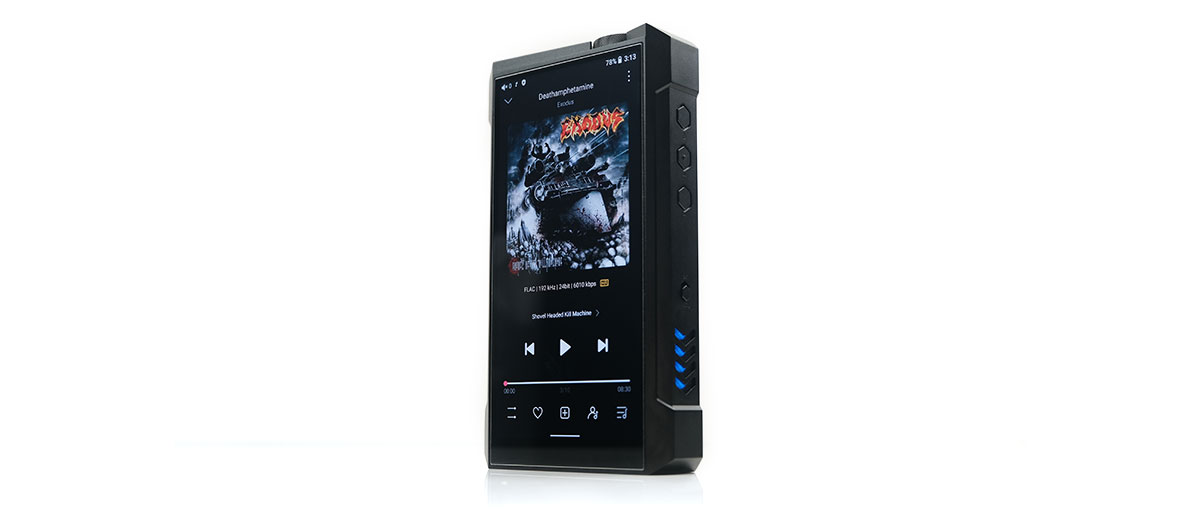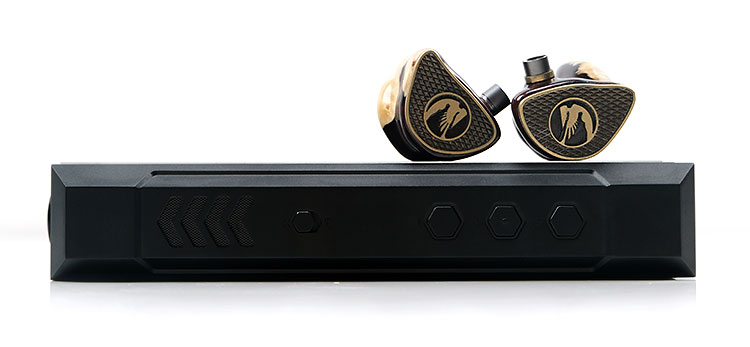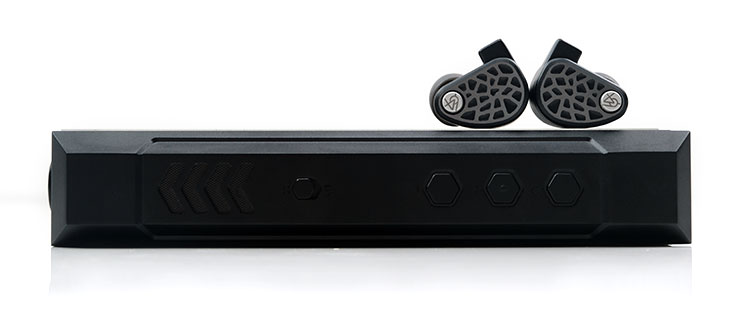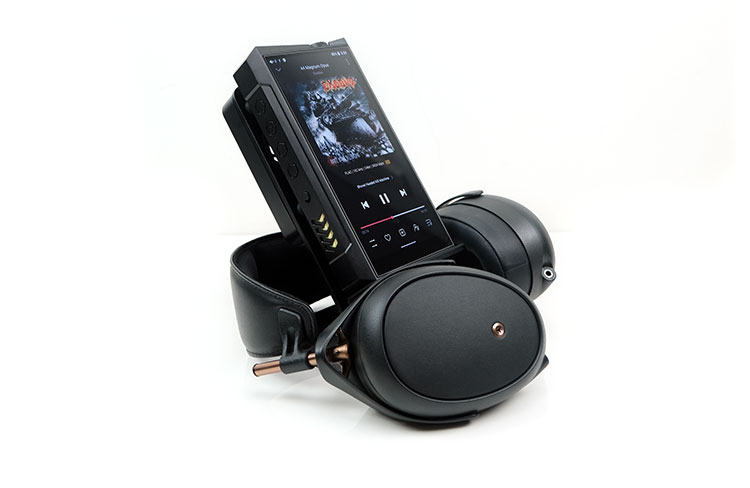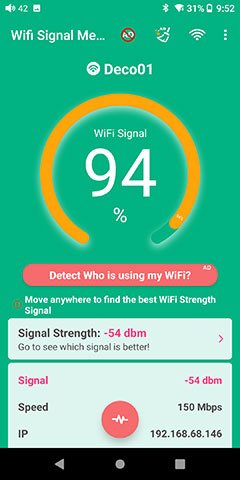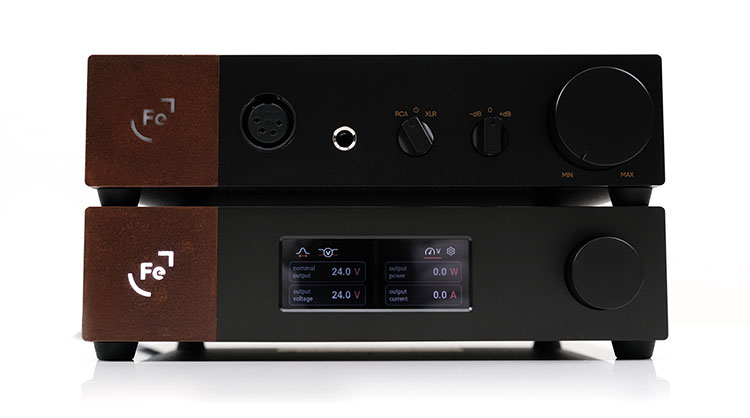Sound Impressions
Summary
The M17 is a clear and very dynamic upgrade on the older M15. Pairings can come across as lively and physical with a tuning that often sends dynamic driver monitors into ‘overdrive’.
The power and available headroom are fantastic throughout whether it be a picky monitor or a demanding headphone. All were handled with aplomb by the M17 leaving the only real question of timbral preference and just how well it matches with your headgear of choice.
The tone is more to the neutral and clean side though not overly so. Given its THX implementation, that description should not be overly surprising. However, there is a degree of smoothing and much better body, especially through the mids and highs, that was not quite there with the leaner sounding M15’s equivalent range.
Still, this is what I would define as a solid-state sound. One that is high on energy, punchy, fast, but slightly to the dry side. It is definitely not a clinical tone. Quite the opposite, in fact, it is very engaging with superb levels of resolution.
In a way, it reminds me of my initial impression of the Gen 1 Schiit Mjolnir/Gungnir setup from about 10 years ago. That ‘take no prisoners’ push-pull dynamic presentation with a highly responsive and slightly forward low-end, vivid mids, and a finely balanced clean treble tone.
It gets better than that with the DC Mode, especially if you are a demanding headphone user. Pushing that voltage and gain level up does wonders for their performance.
The M17 battery mode sounds ‘gentler’ in comparison with demanding headphones such as the Stealth and Diana v2. The DC Mode sounds much more expansive and precise with a big jump in its dynamic range performance. This is very much a desktop-class headphone amp experience.
Timbre
There are a couple of stand-out aspects to how the M17 affects our test monitors, namely the bass response and the amount of body present in the mids and highs. If you are wondering how it shapes up against the DX300 MAX the timbre is less high-fidelity or pristine and more robust and aggressive with an amazing level of PRaT.
Empire Ear’s Legend EVO and Vision Ears EXT users should demo this pairing because the synergy in terms of dynamics and power is incredible. Probably one of the strongest performers for instrumental fundamentals and kick drum authority I have heard to date from a DAP.
And it is not just a wall of bass either, the clarity right down to sub-50Hz on the EVO and EXT was deeply impressive. Nothing smeared or soft sounding with plenty of space and a very articulate and finely layered low-end presentation. Not just monitors either, with DC Mode magnifying the M17’s robust low-end beautifully with the likes of the demanding Diana V2.
At times you can pick up a subtle hint of warmth in the mids and highs compared to the M15. Nothing as overt as an R2R or tube DAP but just enough to keep vocal performance more to the natural than the analytical side.
Upper-mids percussion can still resonate rather than compliment with a very precise rather than liquid overtone but never struck me as being splashy or thin sounding and certainly not fatiguing either with the right pairing.
It certainly helps that the M17 treble overtone is more refined and not as thin sounding as the M15’s top-end. It is still a little on the cooler side for me compared to the DX300 MAX’s slightly softer attack but it offers a superior level of body throughout with that stronger fundamental.
Staging & Dynamics
I could wax lyrical all day about how well the DC Mode M17 fills the soundstage of picky headphones such as the Diana Phi and the Diana V2 or just how well it pushes and tickets the low-end of the DCA Stealth.
The depth and power with that additional voltage and gain level are almost desktop-class IMHO with such an impressive level of headroom compared to any current DAP out there.
Battery mode is no shrinking violet either. If you are considering mobility with monitors then the M17 is going to seriously impress with just how much depth it can deliver combined with a very impressive black background to retain some immersive spaciousness to go along with it.
I had mentioned dynamic driver monitors as the biggest beneficiary simply because most will deliver that low-end by the bucketful which the M17 is well placed to take advantage of.
However, quality BA performers will also sound dynamic and lively. Softears RS10 users know just how well-tuned that BA low-end is so it will be no surprise to tell you that the M17 shines a huge flashlight on its responsive bass performance.
One thing I would mention though is the M17’s energy through the upper mids might be less ideal with mid-forward clean-sounding monitors. The imaging is nowhere near as neutral as the M15 through the mids so the sound can often come across as ‘larger than life’.
Combined with high tempo rock tracks that are heavy on percussion passages your ear can get drawn to that specific area alongside the robust bass tuning. It works a charm for monitors such as the EVO which has a slightly more relaxed top-end but for the feistier alternatives such as the Softears RS10 it can get a bit feisty.
Synergy
The M17 offers a very wide range of output options ranging from SE 3.5mm TRS and a very rare 6.35mm alternative to 2.5mm TRRS and 4.4mm Pentaconn balanced alternatives. It’s probably the only DAP that has such a complete selection of PO and dare I say it, very few desktop amps can say the same also.
As you would expect from this plethora of outputs, the output power of the M17 is quite varied also ranging from 500mW into a 32Ω SE to 1.5W balanced battery mode and 3W in DC mode. Combined with multiple levels of gain you should be able to find a suitable output and gain control for just about any headphone or IEM out there.
Efficiency
Output impedance is sub-ohm for SE which should play ball with sensitive IEMs, however, balanced might seem a little high for some at 2Ω or less. Testing with the Andromeda 2020 using an IEMatch 2.5mm TRRS connector the bass without the IEMatch was a little ‘fruitier’ and more aggressive compared to using the IEMatch on low-gain.
I personally preferred the Andromeda/M17 balanced pairing without the IEMatch and as for going single-ended, there was no difference I could make out with the impedance adjuster attached.
Noise control on the balanced output might be one of the reasons for shifting up to 2Ω because with both the Solaris and the Andromeda 2020 the M17 was very quiet with no perceived noise in low gain battery mode. Impressively quiet you could argue with almost perfect channel matching on low volume.
You will find the same low noise performance from the SE output also with an even blacker background to go along with it.
Pairings
Bass Power
The M17 is ridiculously good with dynamic driver IEMs, be they singular or in a hybrid configuration. The energy and dynamism of the M17 bass performance bring out an almost visceral presentation from IEMs that are already good for low-end impact.
Monitors such as the JH Audio Jolene, Empire Ear’s Legend EVO, and the EXT from Vision Ears had tons of grunt, perhaps too much for the EXT’s mids which came a little bit down in the presence pecking order when the low-end was driven hard from the M17.
Upper Mids Energy
I would, however, just watch out a little for percussion strikes in the upper mids which can have a very cool tone. Nothing metallic or anything, it’s quite acceptable but the focus on the upper mids can be intense with high energy percussion. Upper mids forward-tuned IEMs can often draw your listening to that specific area.
IEMs such as the Softears RS10, and its wonderful BA bass tuning did offer up a bit more rawness in the upper-mids with a slightly edgy sounding percussion timbre. Again, nothing really off but rather the THX amp inside the M17 is not that soft-sounding with a very slight odd-harmonic up tick amplified in that region.
Going back to the EVO, this is where that tuning really worked well for me. Its mids and treble are a shade more on the relaxed side so the energy of the M17 worked a charm in teasing out a bit more bite and clarity from the EVO without pushing it over the edge.
Somewhere in between the all-BA 64 Audio U18s also benefitted from that stronger energy in the mids and treble. It’s not known for a peppy high-end tuning but rather a slightly mellow presentation designed for long listening sessions on the stage floor.
Even on low gain, M17/U18s pairing sounded busy, clean, and clear with plenty of shimmer in the treble tuning. Especially so with brightly mixed modern melodic rock high tempo mixes which tend to inject a bit more coolness in upper-mids percussion passages.
DC Mode
I suspect this is what a lot of headphone users will be interested in though with that additional 3V power supply, better voltage swing, and higher gain levels. However, at 1.5W maximum on a 32Ω load, the 8V battery load should do a very nice job indeed with all but the most demanding of headphones.
Once you switch to DC Mode the dynamic range, staging immersion, and general vibrancy of most headphones tested was improved, in some cases vastly so compared to the previous M15 and some competing DAPs in the same price range.
Moderate Loads
For example, paired with the fairly efficient Meze Liric using the Over-Ear Headphones gain level there were absolutely no issues driving this 30Ω 100dB SPL closed-back planar headphone in battery mode alone. It sounded punchy, clear, and with decent staging qualities for a closed-back design.
However, in DC mode the presentation expands, notable so in staging width with better sub-bass presence and generally a richer more physical tone. The best layman terms I can give you is that the pairing simply becomes bigger sounding, impressively vibrant in its delivery, and more holographic in terms of imaging complexity.
Higher Loads
An even stronger example for DC Mode are headphones well below 100dB SPL such as the Abyss Headphones Diana V2 at 92dB SPL and the Dan Clark Audio Stealth rated even lower at 86-86dB SPL. Neither of these sounds optimal with weak sources, especially the Stealth’s low-end presence which can often lack a bit of grunt with neutral or low power.
Indeed, with the battery mode, the Stealth sounds somewhat soft and indistinct on the low-end. Better than the M15 by a country mile but still not desktop-grade levels by any stretch of the imagination.
Once you activate DC mode it’s like a lens or shining a flashlight on the Stealth’s performance. There is far more physicality on the low-end and much tighter also. The softness is gone, the dynamics are improved considerably.
Not just on the low-end, but vocal presence also with better texture and a slightly more forward and robust delivery. Staging is wider, more complex sounding with nuanced imaging sounding much clearer.
The Diana V2 went through much the same expanded staging transformation with improved instrumental separation. However, the comparative battery mode imaging softness was more explicit in the mid-bass and upper mids percussion strikes.
With DC Mode, the dynamic range was much more pronounced meaning the time to strike, peak volume then the ebb away to nothing was faster, more impactful, with much better definition. That also creates a better sense of space that contributed to a superior imaging performance when at peak voltage.
Wireless Performance
WiFi Signal Detection
The M17 WiFi performance was as good if not slightly better than the M15 though not hugely so. Both are 5G capable so the speed registered in our tests was excellent for the two DAPs with a modem about 2 meters away. The % levels bobbled up and down a bit during our testing process so the capture screenshots are the peak points in their performance.
The R8 % peak was competitive also, however, despite using a dual-band 2.4G/5G WiFi implementation I am presuming it switched to the 2.4G setting to receive our modem signal since the registered speed was much lower at 65Mbps. It was pretty much in the same physical spot as the FiiO DAPs during the testing process but remained on the lower speed setting throughout.

Bluetooth Signal Detection
We changed our testing procedure to loosely mimic the one we used for the DX300 MAX review. Here we used the smartphone as the range finder and gauged the strength of the signal of the M17 compared to the M15 and the R8 which sat beside each other. The test phone was a Samsung Z Flip 3 and was situated approximately 2-3 meters away from the DAPs.
What we benchmarked this time was the RSSI rating or Received Signal Strength Indicator of the BT module inside each DAP. In this case, the M17 rating was in the excellent category for its RSSI and on par or slightly better than a 2019 Huawei P20 smartphone. Both the M15 and the R8 lagged behind a little, with the R8 the weakest of the 4 tested.
Bluetooth Range & Stability
Our final test was a real-world range performance test with the Sony WF-1000XM4 flagship TWS using the M17 and comparing it to the M15 and the HiBy R8 using the same TWS in LDAC mode.
This was a fairly simple test by placing one closed-door between each DAP and myself and walking as far away as possible before the signal dropped. For this, the two FiiO DAPs offered the exact same range of about 1-11 meters with drop out occurring once I started to go behind a second wall. The R8 was maybe 50cm behind at best from the M17 so an almost equal performance.
That’s a little behind an equivalent smartphone such as the Samsung Z Flip 3 but at best 1m using the same test conditions so in all a fairly competitive showing from the M17 for a DAP.
On a side note, I do like the fact FiiO saw fit to show the codec in use in the M17’s (and the M15’s) notifications bar. I do not see that when using the HiBy R8 and personally, I do like to know what codec is being deployed when going into BT transmitting mode.
Wired Performance
Line-out
The M17 offers both single-ended 1.9V and balanced 4.4mm 3.9V line outputs and both are dedicated as in they bypass the built-in THX PO amplifier.
As with our DX300 MAX review, our test amp setup for the M17 is the Ferrum OOR and HYPSOS combination which I tend to find quite revealing for line input coloration and any gain adjustments.
Going balanced LO from the 4.4mm output, the M17 has no gain control, unlike the MAX (Mango). However, the gain dB setting sounds like it is a bit lower on the MAX compared to the M17’s fixed 3.9V lineout.
You do definitely hear a bit of a difference in the energy and volume of the M17/OOR pairing in balanced LO. The OOR is fairly neutral so with our test headphones, the LCD-5, you get almost no coloration from the amp to let you hear some of the subtle differences in both line-out performances.
The M17 brings in a little more high-frequency shimmer on percussion timbre from the LCD-5 as well as a punchier and more energetic low-end. Whereas the MAX sounds more linear, calmer, and the slightly smoother sounding of the two line-outs.

USB-DAC
If this is your first time loading any FiiO DAP as a USB-DAC to your PC then you will need to visit their website’s download page and grab the latest universal DAC driver, (V4.47.0) to initiate a proper handshake with the M17’s XMOS chipset.
It will work on older USB drivers though, mine worked just fine on the driver I installed for the M15 but just to be safe I upgraded to the latest version for this review which loaded just fine. You will know it is working when a small F brand red icon will appear in your taskbar.
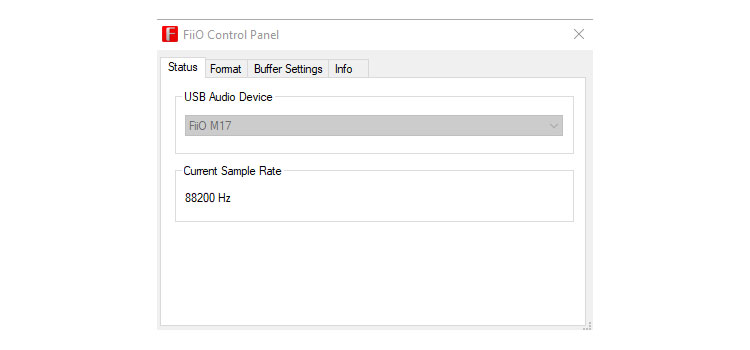
Pull that up and you should see the version of the driver, buffer settings, output settings, and sample rate. Personally, I would just let it run as is though my Windows Sounds settings read the new driver as a Q Series device and the old one as the M17 which was a little odd. You can rename them though to avoid confusion.
The driver set does include an ASIO option which I was able to access via Roon, a JRiver Media Center setup, and Foobar 2000’s ASIO selector sub-menu system. Once activated you can easily pick out anything up to DSD512 and the M17 will handle it real smooth.
I have about 3 Yuko Mabuchi jazz DSD tracks in total setup via JRiver, each about 0.5GB in size and they sounded as lively and clean as I had hoped for using a JH Audio Jolene test monitor and the M17’s balanced output and a high gain setting. I tend to prefer the more dynamic and aggressive high gain sound on the M17 THX amp with these monitors.
Click on page 2 below for more hardware features and the desktop stand
Click on page 3 below for software features and performance
Click on page 4 below for sound impressions, wireless performance & pairings

